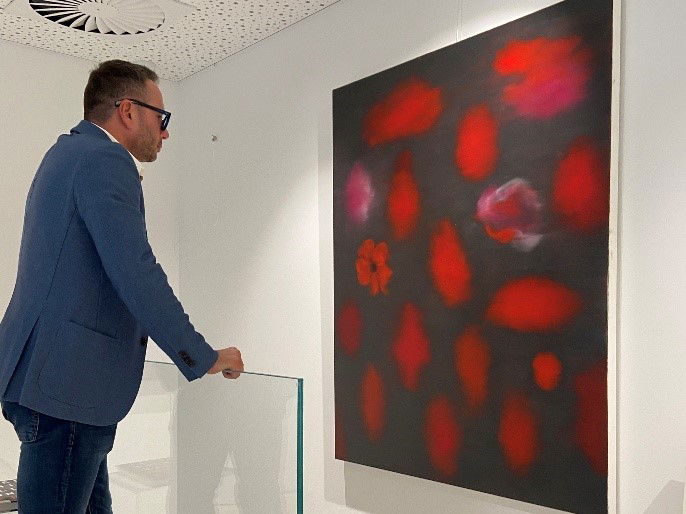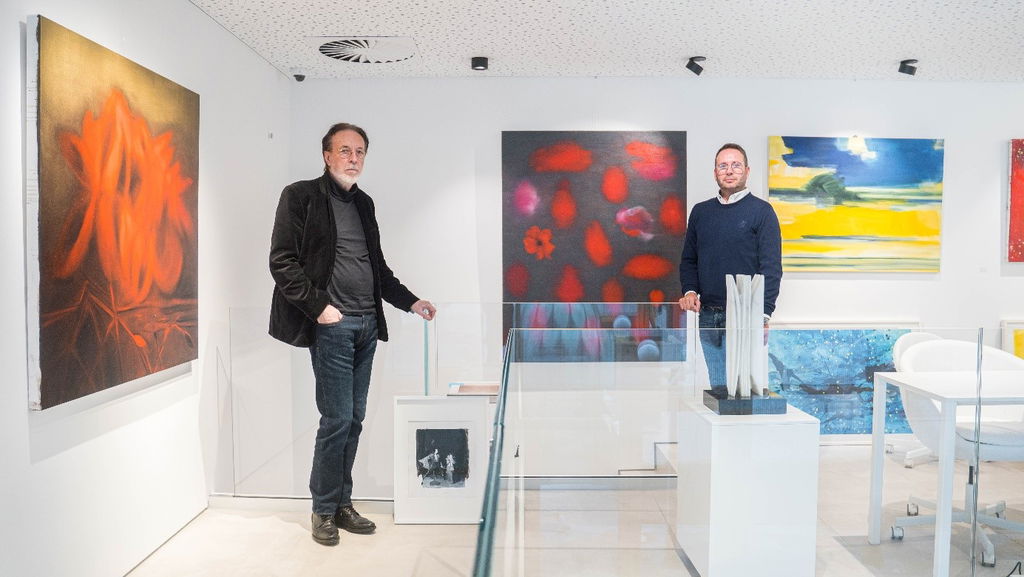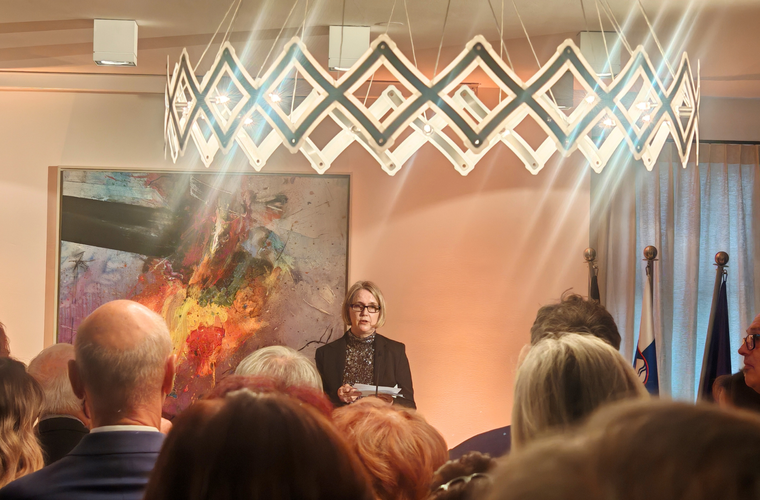Why look at art?

Several institutions around the world are actively researching the connection between art and well-being, including the World Health Organisation and Jameel Arts & Health Lab. The findings to date in this area can be summarised in four points:
1. Art helps with mental health
One of the main benefits of viewing art, or receptive engagement with art, is that it reduces symptoms of depression, anxiety, and stress, which can help improve mental well-being. A study published in 2022 in Frontiers in Psychology, found that even a small amount of art viewing, whether in person or virtually, significantly reduced stress and anxiety levels, with participants showing lower levels of the stress hormone cortisol and improved mood.
The importance of artistic engagement in this regard is increasingly being recognized by governments. A landmark 2024 study commissioned by the British government found strong evidence for improvements in mental health through “general cultural engagement,” including art viewing. It is estimated that the UK has “127,000 fewer people with depression” as a result.
The benefits of viewing art are also being recognised in clinical contexts. Hospital Rooms, for example, is a UK charity that transforms mental health hospital units by organising creative workshops for patients and commissioning artists to create works for these spaces. “We work with people who are often diagnosed with serious mental illness and face restrictions on their freedoms associated with their care,” said Niamh White, co-founder of the charity. “Here, artwork works on a profound level; it can acknowledge a person’s experience, communicate that they are valued, and offer a view of another world and new possibilities. Complementing clinical care, all of this makes a tangible contribution to recovery and healing.” The charity recently announced a new three-year initiative to collaborate with more than 50 artists – including Peter Liversidge, Lakwena Maciver, Veronica Ryan and Alberto Whittle – on new commissions in UK hospitals.
2. Art can improve social skills and resilience
Is there a more important life skill in our uncertain times than resilience? “Viewing art with purpose and reflection can enhance emotional awareness and regulation,” writes psychiatrist Jason Shimiaie in an article for Psychology Today. “Whether it’s creating, observing, or reflecting on art, we’re opening up pathways to self-discovery and resilience.”
The National Galleries of Scotland (NGS), which runs the “Your Art World” initiative for children, says art can foster social interaction and help us communicate important ideas. “When we look at art, we see the world through the eyes of the artist,” it says on its website. “Artists can show us a different perspective… Your art world celebrates diversity, inclusion and the fact that we all see things differently, and encourages young people to be open-minded, which is one of the characteristics of a creative mindset.”
Social connections are also particularly important for the older generation. Isolation and loneliness are linked to increased health risks such as heart disease, obesity, a weakened immune system, depression and cognitive decline. Shared activities such as participating in art groups and visiting museums have been reported to reduce these risks. “Arts engagement is key to healthy ageing,” says the UK Parliament’s report on Creative Health.
3. Engaging in art can be good for your heart
There is scientific evidence that viewing art can help maintain heart health. Viewing artwork has been reported to lower blood pressure. The positive emotions we experience when we are moved by art are also associated with lower levels of cytokines (proteins that help control inflammation), which helps support the immune system.
Viewing art can also help lower heart rate, according to a 2024 study. After following older adults for three months who participated in art activities, including guided tours of the Montreal Museum of Fine Arts, it was found that time spent in the museum “significantly reduced heart rate throughout the day, suggesting health benefits for older community residents.”

4. Surrounding yourself with art improves your mood
Our love of art is chemical—studies show that the presence of art releases dopamine, a neurotransmitter that causes "feel-good" feelings and contributes to feelings of pleasure.
Research conducted by neurobiologist Professor Semir Zeki of University College London has shown that our brains respond to beautiful works of art in much the same way as we respond when we are in love. Zeki placed subjects in a scanner and showed them a series of images every 10 seconds, monitoring changes in blood flow in one part of their brains. The study showed that blood flow increased in proportion to how much the subject liked the image. "We are confirming the scientific truth of what has been known for a long time—that beautiful images make us feel much better," he told The Telegraph. "Until this research was conducted, we didn't know how powerful their effect on our brains was."
Art can have a stronger influence on us than we thought. It is especially important to surround ourselves with works that we like visually or symbolically, whether it is Raphael's realism or Bleckner's abstraction. So let's take the time to explore local and global galleries, and furnish our spaces with works that we love to look at. If you don't know yet which exhibitions or fairs you can visit, click on the article of art events that will take place in the second half of this year. If you are currently furnishing your new home, visit the Stoja Art Collection Gallery, where we have a variety of works by big blue-chip names in today's art world on display for you. Will you find yourself in Ross Bleckner's flowers or Zimmer's abstract landscapes?







